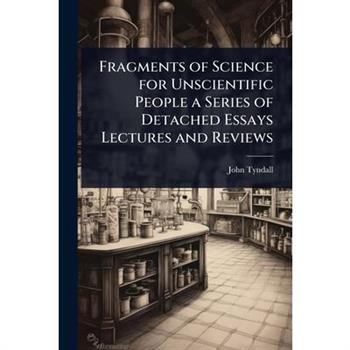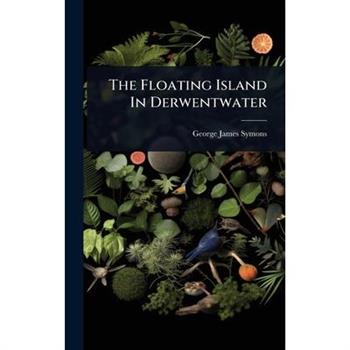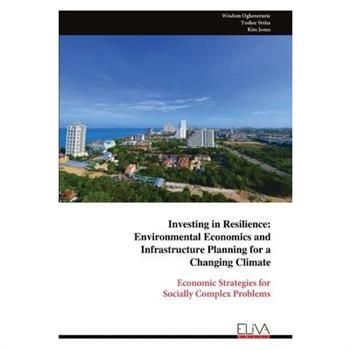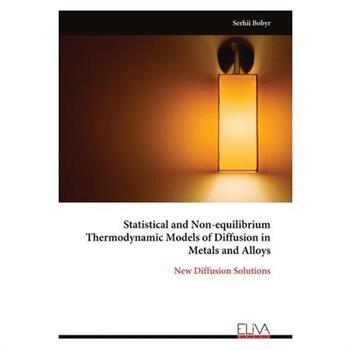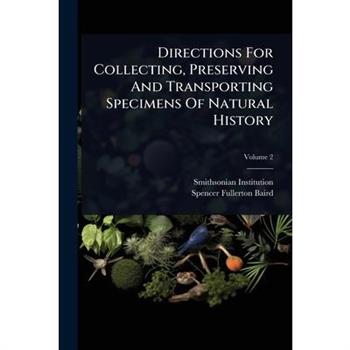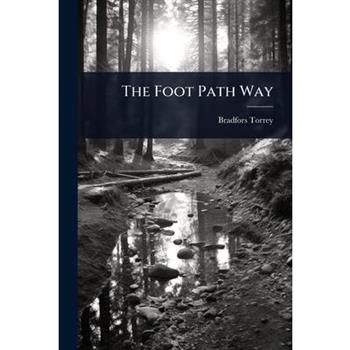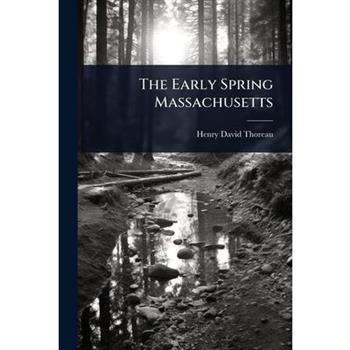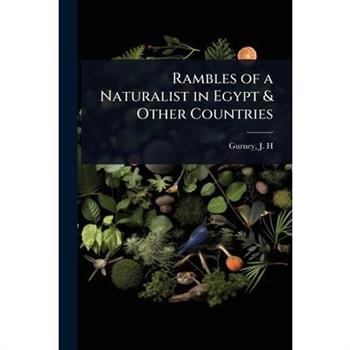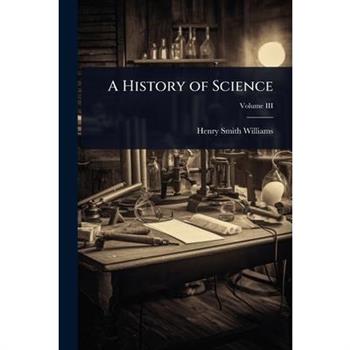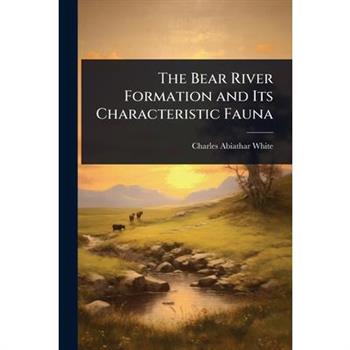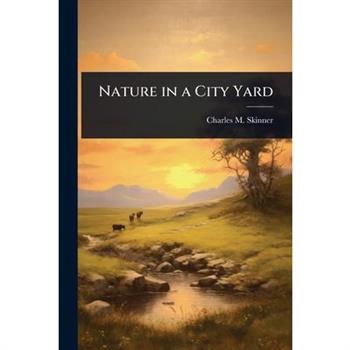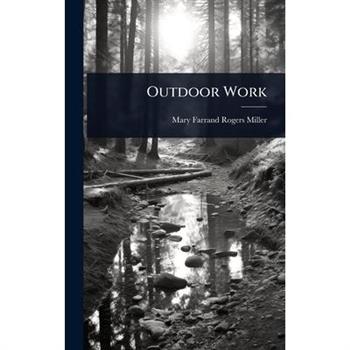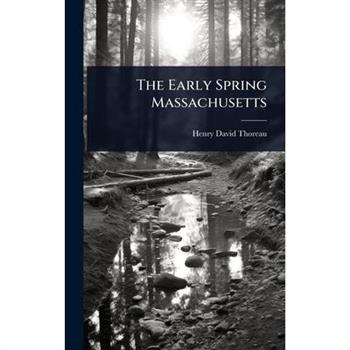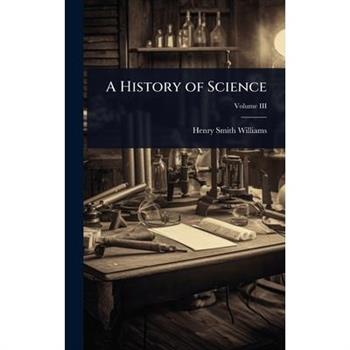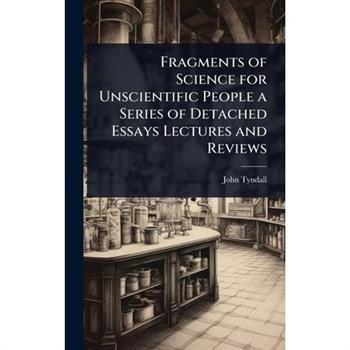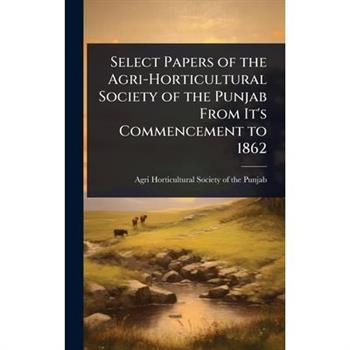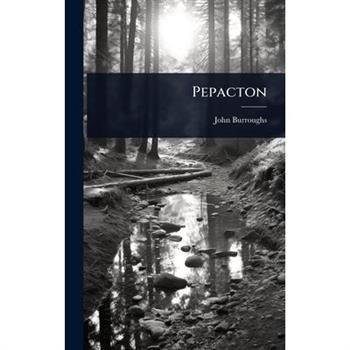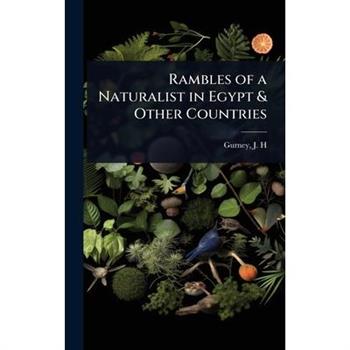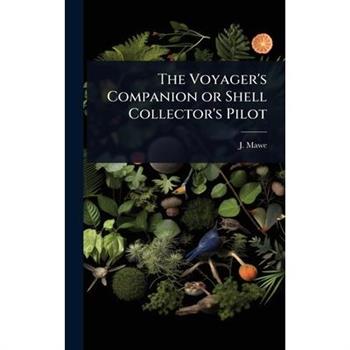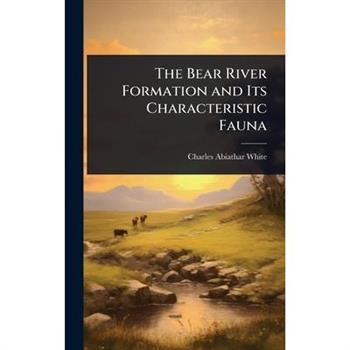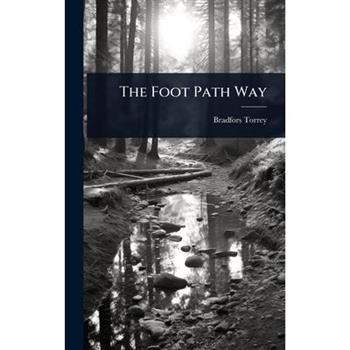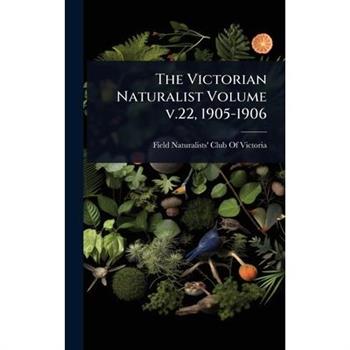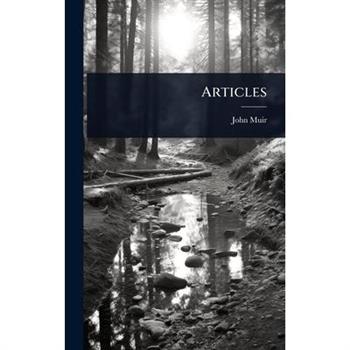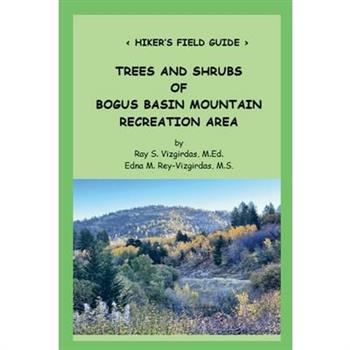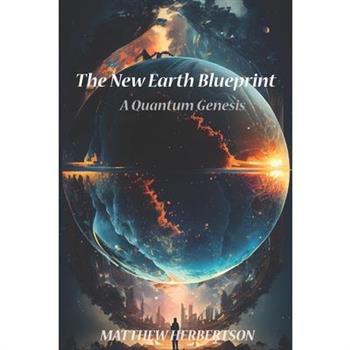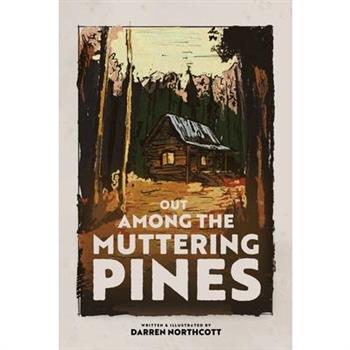Fragments of Science for Unscientific People a Series of Detached Essays Lectures and Reviews
"Fragments of Science for Unscientific People" is a collection of essays, lectures, and reviews by the renowned 19th-century physicist John Tyndall. Designed to make scientific concepts accessible to a broad audience, Tyndall explores a diverse range of topics, from the nature of light and sound to the mysteries of the cosmos. This volume showcases Tyndall's remarkable ability to communicate complex ideas with clarity and enthusiasm. His essays offer insights into the scientific debates of his time and reveal the enduring power of scientific inquiry. A valuable resource for anyone interested in the history of science and the popularization of scientific knowledge, this book captures the spirit of discovery and the wonder of the natural world.This work has been selected by scholars as being culturally important, and is part of the knowledge base of civilization as we know it. This work was reproduced from the original artifact, and remains as true to the original work as possible. Therefore, you will see the original copyright references, library stamps (as most of these works have been housed in our most important libraries around the world), and other notations in the work.This work is in the public domain in the United States of America, and possibly other nations. Within the United States, you may freely copy and distribute this work, as no entity (individual or corporate) has a copyright on the body of the work.As a reproduction of a historical artifact, this work may contain missing or blurred pages, poor pictures, errant marks, etc. Scholars believe, and we concur, that this work is important enough to be preserved, reproduced, and made generally available to the public. We appreciate your support of the preservation process, and thank you for being an important part of keeping this knowledge alive and relevant.
The Floating Island In Derwentwater
Dive into the curious phenomenon of the floating island on Derwentwater with George James Symons's meticulously researched account, "The Floating Island In Derwentwater: Its History And Mystery, With Notes Of Other Dissimilar Islands." This volume explores the historical appearances and scientific explanations behind the transient islands that have puzzled and fascinated observers for generations. Symons delves into historical records, eyewitness accounts, and scientific analyses to unravel the mystery of these ephemeral landmasses. Readers will discover not only the specifics of Derwentwater's floating island but also comparative studies of similar phenomena worldwide. This book offers a unique blend of local history, natural science, and intriguing mystery, appealing to both the casual reader and the dedicated scholar.This work has been selected by scholars as being culturally important, and is part of the knowledge base of civilization as we know it. This work was reproduced from the original artifact, and remains as true to the original work as possible. Therefore, you will see the original copyright references, library stamps (as most of these works have been housed in our most important libraries around the world), and other notations in the work.This work is in the public domain in the United States of America, and possibly other nations. Within the United States, you may freely copy and distribute this work, as no entity (individual or corporate) has a copyright on the body of the work.As a reproduction of a historical artifact, this work may contain missing or blurred pages, poor pictures, errant marks, etc. Scholars believe, and we concur, that this work is important enough to be preserved, reproduced, and made generally available to the public. We appreciate your support of the preservation process, and thank you for being an important part of keeping this knowledge alive and relevant.
CSF-Contacting Raphe Nucleus (CsfR) Central Connections In Homeostasis, Anesthesia and Pain
Discover the pioneering research that unveils the intricate details of the XIII cranial nucleus, also known as the CSF-contacting Raphe nucleus (CsfR). Authored by Si-Yuan Song from Baylor College of Medicine, this comprehensive study examines the unique anatomical and functional characteristics of the CsfR, a recently identified brain nucleus with crucial roles in homeostasis, anesthesia, and pain. Through detailed neural tract tracing techniques, this work offers valuable insights into the CsfR's spatial connections within the central nervous system and its significant impact on various physiological activities. Employing advanced neural pathway tracing, the research precisely maps the central connections of the CsfR, providing essential methodological foundations for future investigations. This book is an indispensable resource for neuroscientists, medical researchers, and practitioners interested in the latest advancements in brain anatomy and its medical implications. It not only establishes a solid foundation for understanding the fundamental functions of this unique nucleus but also encourages further exploration into its potential applications in emotion, cognition, homeostasis, anesthesia, and pain.
Investing in Resilience
In an era where the impact of climate change in local communities has become more glaring, ""Investing in Resilience: Environmental Economics and Infrastructure Planning for a Changing Climate"" offers a dynamic blueprint for addressing socially complex environmental challenges. Drawing inspiration from leading thinkers like Vaclav Smil and groundbreaking studies on climate resilience, this book explores how communities can tackle systemic threats to energy and water resources. Through a compelling narrative, the book introduces a two-pronged approach to invest in community infrastructure in the face of a rapidly changing climate: first, by identifying and prioritizing equitable coastal resilience indicators, and second, by harnessing the innovative Watergy model - a dynamic tool designed to evaluate the long-term socioeconomic and environmental trade-offs that come with sustainable resource management. Readers will journey through real-world examples, from underserved coastal cities threatened by High Impact Low Frequency climate-related events to urban areas grappling with the dynamic demands of modern energy transition. With a focus on economic strategies, this work emphasizes the importance of applying economic frameworks to address the multifaceted social and environmental challenges posed by climate change. As communities face increasing pressures from both natural disasters and resource depletion, "Integrated Infrastructure Planning"" challenges us to rethink our relationship with energy and water systems, guiding decision-makers, industries, and individuals through a path of economically viable, equitable, resilient, and sustainable solutions. This book is a call to action for anyone seeking to contribute to a world where economic growth is no longer at odds with environmental stewardship. Will we find the environmental and economic balance needed to secure a livable planet? This book provides the tools and insights needed to turn that question into action.
Modeling of Non-Linearities in Neuronal Dendritic Structures and Their Role in Feature Extraction
In order to achieve type-specific functionality, the study examines the role that homogenous morphology and electrophysiological play in type-specific neurons. In order to mimic the formation, propagation, and cell-field interaction of action potentials, two types of membrane dynamics are studied: active and passive. To mimic class-specific neurons, a hierarchical linear-nonlinear structure is created. To replicate scotopic and color vision edge estimates in the human visual cortex, an orientation-selective ganglion cell network is constructed and simulated. The model sheds light on similar networks' receptive field widths and bandwidth tuning capacity. The research study demonstrates how signals in the magnocellular layer might influence the behavior of contour recognition and boundary estimation.
Statistical and Non-equilibrium Thermodynamic Models of Diffusion in Metals and Alloys
The diffusion of hydrogen, carbon and alloying elements in metals is of great importance because it determines the engineering problems associated with the creation and use of high-strength steels, reactor materials, alloys for transporting and storing hydrogen, etc. The collection of works develops new models for calculating the diffusion parameters of alloying elements in metals and alloys as a complex system, including the mutual influence of alloying elements and applied to calculate the parameters in advanced alloys. A nonequilibrium thermodynamic approach has been developed for calculating diffusion processes in multicomponent alloys, including the diffusion of basic elements and carbon. A diffusion-vacancy mechanism describing the process of graphitization of cast iron has been developed. Common expressions for calculation of cross-factors, motive forces and fluxes in the Onsager's equations in a multicomponent thermodynamic system are suggested. This makes it possible to carry out calculations of diffusion processes taking into account the mutual influence of elements and phase transformations in the system. In the developed statistical calculation model (SCM) the pre-exponential factor of hydrogen and carbon diffusion in metals has been calculated from first principle of statistical physics. Activation energy of hydrogen and carbon diffusion in all metals is determined by correlation with the melting point of these metals. For temperatures below 1000 K, the SCM model uses activation energies calculated from first principles. For the diffusion of hydrogen and carbon in metals, very good agreement was obtained between experimental values and the SCM model over a wide temperature range. The SCM model allows, in contrast to existing models, to predict the values of the diffusion parameters of hydrogen and carbon in alloys.This project was funded by the Swedish Foundation for Strategic Research (SSF).
Biogas
Biogas technology offers a promising solution for mitigating climate change and promoting a just transition in the rural areas of Limpopo, South Africa. This paper explores the multifaceted benefits of biogas systems, including reductions in greenhouse gas emissions, improved waste management, and enhanced energy security. By examining case studies and stakeholder perspectives, the research highlights how biogas technology can contribute to sustainable development and social equity. The findings suggest that with adequate policy support, community engagement, and technical training, biogas technology can play a pivotal role in enabling a just transition for rural communities. Climate change presents a critical challenge globally, necessitating urgent and sustainable energy solutions. In rural areas of Limpopo, South Africa, communities face significant energy poverty, relying heavily on traditional biomass sources such as wood and charcoal. This dependency not only contributes to deforestation and health problems but also exacerbates greenhouse gas emissions. Biogas technology, which converts organic waste into clean energy, offers a sustainable alternative that can address these issues while promoting environmental and socio-economic benefits. Rural communities in Limpopo face numerous challenges, including limited access to reliable and affordable energy, inadequate waste management, and socio-economic inequalities. These issues are further compounded by the impacts of climate change. There is a pressing need for solutions that not only mitigate climate change but also support a just transition, ensuring that all members of society benefit from sustainable development.
Decorated by Design
Decorated by Design: Returning to the Beauty WithinBy SahibzadaYou were never empty - just covered.Never lost - just distant from your design.Decorated by Design is a powerful spiritual reflection on reclaiming the beauty, purpose, and divine identity woven into every human soul. In a world obsessed with outward appearances, this book calls you to look inward - to rediscover the sacred truth of who you are, and why you were created.Through timeless Islamic wisdom, deep personal insight, and heart-awakening reminders, Sahibzada guides you on a journey of inner revival. He explores the spiritual anatomy of the self (nafs), the traps of ego and illusion, and the divine light that remains within - untouched, waiting to rise.This is not a self-help book. It is a soul-help call - a return to fitrah, to self-worth, to the quiet majesty of your God-given design. You are not here by accident. You are adorned with purpose, shaped with mercy, and called to rise with beauty that cannot be bought - only remembered.Whether you are seeking healing, self-worth, or a deeper connection with Allah ﷻ, this book offers a mirror to the soul - and a map back to your origin.
Directions For Collecting, Preserving And Transporting Specimens Of Natural History
"Directions For Collecting, Preserving And Transporting Specimens Of Natural History, Volume 2" is a practical guide from the Smithsonian Institution, authored in part by Spencer Fullerton Baird. This volume offers detailed instructions for naturalists and scientists on the proper methods for gathering, maintaining, and shipping various specimens. The book covers diverse areas such as botany, zoology, and geology, providing invaluable insights into the techniques used by researchers in the 19th century. Originally intended to assist in expanding the Smithsonian's collections, this volume remains relevant for anyone interested in the history of science, museum studies, or the practice of natural history. It provides a glimpse into the meticulous processes required to document and preserve the natural world, offering both historical context and potentially useful knowledge for contemporary researchers and enthusiasts.This work has been selected by scholars as being culturally important, and is part of the knowledge base of civilization as we know it. This work was reproduced from the original artifact, and remains as true to the original work as possible. Therefore, you will see the original copyright references, library stamps (as most of these works have been housed in our most important libraries around the world), and other notations in the work.This work is in the public domain in the United States of America, and possibly other nations. Within the United States, you may freely copy and distribute this work, as no entity (individual or corporate) has a copyright on the body of the work.As a reproduction of a historical artifact, this work may contain missing or blurred pages, poor pictures, errant marks, etc. Scholars believe, and we concur, that this work is important enough to be preserved, reproduced, and made generally available to the public. We appreciate your support of the preservation process, and thank you for being an important part of keeping this knowledge alive and relevant.
The Floating Island In Derwentwater
Dive into the curious phenomenon of the floating island on Derwentwater with George James Symons's meticulously researched account, "The Floating Island In Derwentwater: Its History And Mystery, With Notes Of Other Dissimilar Islands." This volume explores the historical appearances and scientific explanations behind the transient islands that have puzzled and fascinated observers for generations. Symons delves into historical records, eyewitness accounts, and scientific analyses to unravel the mystery of these ephemeral landmasses. Readers will discover not only the specifics of Derwentwater's floating island but also comparative studies of similar phenomena worldwide. This book offers a unique blend of local history, natural science, and intriguing mystery, appealing to both the casual reader and the dedicated scholar.This work has been selected by scholars as being culturally important, and is part of the knowledge base of civilization as we know it. This work was reproduced from the original artifact, and remains as true to the original work as possible. Therefore, you will see the original copyright references, library stamps (as most of these works have been housed in our most important libraries around the world), and other notations in the work.This work is in the public domain in the United States of America, and possibly other nations. Within the United States, you may freely copy and distribute this work, as no entity (individual or corporate) has a copyright on the body of the work.As a reproduction of a historical artifact, this work may contain missing or blurred pages, poor pictures, errant marks, etc. Scholars believe, and we concur, that this work is important enough to be preserved, reproduced, and made generally available to the public. We appreciate your support of the preservation process, and thank you for being an important part of keeping this knowledge alive and relevant.
Catalogue of the Science Collections for Teaching and Research in the Victoria and Albert Museum
"Catalogue of the Science Collections for Teaching and Research in the Victoria and Albert Museum" provides a detailed overview of the museum's scientific holdings at the turn of the 20th century. This catalogue meticulously lists a wide array of instruments, including hygrometers, dip circles, magnetometers, and rain gauges, alongside specialized devices such as Six's Thermometers and Aneroid Barometers. The collection also features items lent by notable figures and institutions like L and the Hydrographic Department, highlighting the Royal Society's influence on scientific advancement during that period. With references to Francis Ronalds and the Kew Observatory, this catalogue provides invaluable insight into the state of scientific research and education and demonstrates the museum's commitment to preserving and presenting the scientific achievements of the era. A crucial resource for historians of science, museum curators, and anyone interested in the material culture of scientific inquiry.This work has been selected by scholars as being culturally important, and is part of the knowledge base of civilization as we know it. This work was reproduced from the original artifact, and remains as true to the original work as possible. Therefore, you will see the original copyright references, library stamps (as most of these works have been housed in our most important libraries around the world), and other notations in the work.This work is in the public domain in the United States of America, and possibly other nations. Within the United States, you may freely copy and distribute this work, as no entity (individual or corporate) has a copyright on the body of the work.As a reproduction of a historical artifact, this work may contain missing or blurred pages, poor pictures, errant marks, etc. Scholars believe, and we concur, that this work is important enough to be preserved, reproduced, and made generally available to the public. We appreciate your support of the preservation process, and thank you for being an important part of keeping this knowledge alive and relevant.
The Voyager’s Companion or Shell Collector’s Pilot
"The Voyager's Companion or Shell Collector's Pilot" by J. Mawe, originally published in 1825, serves as an indispensable guide for those interested in natural history and shell collecting. This book offers practical advice and detailed descriptions to aid travelers and collectors in identifying and preserving various specimens. Intended as a companion for voyages, it combines elements of natural science with the thrill of discovery. Mawe's work provides insights into the methods and mindset of early 19th-century naturalists. This edition retains the original charm and educational value, making it a fascinating read for historians, collectors, and anyone captivated by the wonders of the natural world and the era of exploration.This work has been selected by scholars as being culturally important, and is part of the knowledge base of civilization as we know it. This work was reproduced from the original artifact, and remains as true to the original work as possible. Therefore, you will see the original copyright references, library stamps (as most of these works have been housed in our most important libraries around the world), and other notations in the work.This work is in the public domain in the United States of America, and possibly other nations. Within the United States, you may freely copy and distribute this work, as no entity (individual or corporate) has a copyright on the body of the work.As a reproduction of a historical artifact, this work may contain missing or blurred pages, poor pictures, errant marks, etc. Scholars believe, and we concur, that this work is important enough to be preserved, reproduced, and made generally available to the public. We appreciate your support of the preservation process, and thank you for being an important part of keeping this knowledge alive and relevant.
The Victorian Naturalist Volume v.22, 1905-1906
"The Victorian Naturalist Volume v.22, 1905-1906" offers a fascinating glimpse into the natural world as observed by the Field Naturalists' Club of Victoria. This meticulously compiled volume captures the spirit of scientific inquiry and exploration prevalent during the late Victorian era. Readers will discover detailed accounts of zoological and botanical findings, offering insights into the diverse flora and fauna of the Australian landscape.Published by the Field Naturalists' Club, this historical record serves as a valuable resource for researchers, historians, and anyone with an interest in the natural history of Victoria. It stands as a testament to the enduring importance of field observation and the dedicated work of early naturalists in documenting and understanding the world around us.This work has been selected by scholars as being culturally important, and is part of the knowledge base of civilization as we know it. This work was reproduced from the original artifact, and remains as true to the original work as possible. Therefore, you will see the original copyright references, library stamps (as most of these works have been housed in our most important libraries around the world), and other notations in the work.This work is in the public domain in the United States of America, and possibly other nations. Within the United States, you may freely copy and distribute this work, as no entity (individual or corporate) has a copyright on the body of the work.As a reproduction of a historical artifact, this work may contain missing or blurred pages, poor pictures, errant marks, etc. Scholars believe, and we concur, that this work is important enough to be preserved, reproduced, and made generally available to the public. We appreciate your support of the preservation process, and thank you for being an important part of keeping this knowledge alive and relevant.
The Foot Path Way
璽€œThe Foot Path Way璽€ is a collection of charming essays by Bradford Torrey, an acclaimed American naturalist and essayist, first published in 1896. Torrey's keen observations and gentle humor invite readers to explore the natural world through leisurely walks and thoughtful contemplation. Focusing primarily on the landscapes of New England, these essays capture the beauty and tranquility of the countryside, offering a glimpse into a simpler, more reflective way of life. From detailed descriptions of birds and their songs to musings on the changing seasons, Torrey's writing is both informative and deeply personal. His essays encourage readers to slow down, appreciate the small details, and find joy in the everyday wonders of nature. 璽€œThe Foot Path Way璽€ remains a timeless classic, appealing to anyone with an interest in nature, travel, and the art of observation.This work has been selected by scholars as being culturally important, and is part of the knowledge base of civilization as we know it. This work was reproduced from the original artifact, and remains as true to the original work as possible. Therefore, you will see the original copyright references, library stamps (as most of these works have been housed in our most important libraries around the world), and other notations in the work.This work is in the public domain in the United States of America, and possibly other nations. Within the United States, you may freely copy and distribute this work, as no entity (individual or corporate) has a copyright on the body of the work.As a reproduction of a historical artifact, this work may contain missing or blurred pages, poor pictures, errant marks, etc. Scholars believe, and we concur, that this work is important enough to be preserved, reproduced, and made generally available to the public. We appreciate your support of the preservation process, and thank you for being an important part of keeping this knowledge alive and relevant.
The Writings of John Burroughs
璽€œBirds and Poets璽€ is a collection of essays by John Burroughs, one of America's most beloved nature writers. Originally published in 1895, this volume showcases Burroughs' keen observations of the natural world, particularly his insightful and lyrical writings on birds. The essays blend scientific accuracy with poetic reflection, offering readers a unique perspective on the beauty and interconnectedness of nature. Burroughs' work helped popularize the field of ornithology and inspired generations of nature enthusiasts.Included are such classics as "Wake-Robin," "The Pastoral Bees," and "An Idyl of the Honey-Bee." Burroughs' gentle prose and deep appreciation for the natural world make this collection a timeless celebration of the American landscape and its inhabitants.This work has been selected by scholars as being culturally important, and is part of the knowledge base of civilization as we know it. This work was reproduced from the original artifact, and remains as true to the original work as possible. Therefore, you will see the original copyright references, library stamps (as most of these works have been housed in our most important libraries around the world), and other notations in the work.This work is in the public domain in the United States of America, and possibly other nations. Within the United States, you may freely copy and distribute this work, as no entity (individual or corporate) has a copyright on the body of the work.As a reproduction of a historical artifact, this work may contain missing or blurred pages, poor pictures, errant marks, etc. Scholars believe, and we concur, that this work is important enough to be preserved, reproduced, and made generally available to the public. We appreciate your support of the preservation process, and thank you for being an important part of keeping this knowledge alive and relevant.
The Early Spring Massachusetts
璽€œThe Early Spring Massachusetts璽€ offers readers a glimpse into the natural world of late 19th-century New England through the keen observations of Henry David Thoreau. In this collection of essays, Thoreau explores the subtle yet profound changes that mark the arrival of spring in Massachusetts, capturing the essence of the season's awakening. His vivid descriptions of the local flora and fauna, combined with his philosophical reflections, invite readers to contemplate their relationship with nature.Written in Thoreau's distinctive style, these essays blend scientific accuracy with poetic sensibility, making them a valuable read for both nature enthusiasts and those interested in American literary history. 璽€œThe Early Spring Massachusetts璽€ serves as a timeless reminder of the beauty and importance of the natural world, encouraging a deeper appreciation for the environment.This work has been selected by scholars as being culturally important, and is part of the knowledge base of civilization as we know it. This work was reproduced from the original artifact, and remains as true to the original work as possible. Therefore, you will see the original copyright references, library stamps (as most of these works have been housed in our most important libraries around the world), and other notations in the work.This work is in the public domain in the United States of America, and possibly other nations. Within the United States, you may freely copy and distribute this work, as no entity (individual or corporate) has a copyright on the body of the work.As a reproduction of a historical artifact, this work may contain missing or blurred pages, poor pictures, errant marks, etc. Scholars believe, and we concur, that this work is important enough to be preserved, reproduced, and made generally available to the public. We appreciate your support of the preservation process, and thank you for being an important part of keeping this knowledge alive and relevant.
Rambles of a Naturalist in Egypt & Other Countries
Embark on a captivating journey through the eyes of a 19th-century naturalist with "Rambles of a Naturalist in Egypt & Other Countries" by J.H. Gurney. This meticulously observed account offers a unique window into the landscapes, flora, and fauna of Egypt and other exotic locales. Gurney's detailed observations and engaging prose bring to life the wonders of the natural world, providing both scientific insight and a sense of adventure. Originally published in 1876, this book offers a fascinating glimpse into the scientific exploration of the Victorian era. Perfect for readers interested in natural history, travel literature, or the history of science, "Rambles of a Naturalist in Egypt & Other Countries" remains a timeless testament to the enduring allure of discovery.This work has been selected by scholars as being culturally important, and is part of the knowledge base of civilization as we know it. This work was reproduced from the original artifact, and remains as true to the original work as possible. Therefore, you will see the original copyright references, library stamps (as most of these works have been housed in our most important libraries around the world), and other notations in the work.This work is in the public domain in the United States of America, and possibly other nations. Within the United States, you may freely copy and distribute this work, as no entity (individual or corporate) has a copyright on the body of the work.As a reproduction of a historical artifact, this work may contain missing or blurred pages, poor pictures, errant marks, etc. Scholars believe, and we concur, that this work is important enough to be preserved, reproduced, and made generally available to the public. We appreciate your support of the preservation process, and thank you for being an important part of keeping this knowledge alive and relevant.
A History of Science
璽€œA History of Science, Volume III璽€ by Henry Smith Williams delves into the captivating narrative of scientific advancement. This volume explores pivotal moments and influential figures who shaped our understanding of the natural world. From groundbreaking discoveries to paradigm-shifting theories, Williams meticulously chronicles the evolution of scientific thought. Readers will gain insights into the historical context of scientific progress, tracing the intricate connections between scientific inquiry and societal development. This book serves as an invaluable resource for students, scholars, and anyone interested in the history of science and its profound impact on human civilization. Discover the enduring legacy of scientific pioneers and their relentless pursuit of knowledge.This work has been selected by scholars as being culturally important, and is part of the knowledge base of civilization as we know it. This work was reproduced from the original artifact, and remains as true to the original work as possible. Therefore, you will see the original copyright references, library stamps (as most of these works have been housed in our most important libraries around the world), and other notations in the work.This work is in the public domain in the United States of America, and possibly other nations. Within the United States, you may freely copy and distribute this work, as no entity (individual or corporate) has a copyright on the body of the work.As a reproduction of a historical artifact, this work may contain missing or blurred pages, poor pictures, errant marks, etc. Scholars believe, and we concur, that this work is important enough to be preserved, reproduced, and made generally available to the public. We appreciate your support of the preservation process, and thank you for being an important part of keeping this knowledge alive and relevant.
The Bear River Formation and Its Characteristic Fauna
This work has been selected by scholars as being culturally important, and is part of the knowledge base of civilization as we know it. This work was reproduced from the original artifact, and remains as true to the original work as possible. Therefore, you will see the original copyright references, library stamps (as most of these works have been housed in our most important libraries around the world), and other notations in the work.This work is in the public domain in the United States of America, and possibly other nations. Within the United States, you may freely copy and distribute this work, as no entity (individual or corporate) has a copyright on the body of the work.As a reproduction of a historical artifact, this work may contain missing or blurred pages, poor pictures, errant marks, etc. Scholars believe, and we concur, that this work is important enough to be preserved, reproduced, and made generally available to the public. We appreciate your support of the preservation process, and thank you for being an important part of keeping this knowledge alive and relevant.
Nature in a City Yard
璽€œNature in a City Yard璽€ invites readers to discover the hidden natural world flourishing within the confines of urban life. Through a series of engaging essays, Charles M. Skinner explores the unexpected beauty and resilience of nature found in the most unlikely of places: a city yard. From the smallest insect to the most persistent weed, Skinner reveals the wonders that often go unnoticed amidst the hustle and bustle of urban existence. Written with a keen eye for detail and a deep appreciation for the natural world, this collection is a testament to the enduring power of nature to inspire and uplift, even in the heart of the city. A charming and insightful read for nature lovers and city dwellers alike, 璽€œNature in a City Yard璽€ encourages us to pause, observe, and reconnect with the natural world around us.This work has been selected by scholars as being culturally important, and is part of the knowledge base of civilization as we know it. This work was reproduced from the original artifact, and remains as true to the original work as possible. Therefore, you will see the original copyright references, library stamps (as most of these works have been housed in our most important libraries around the world), and other notations in the work.This work is in the public domain in the United States of America, and possibly other nations. Within the United States, you may freely copy and distribute this work, as no entity (individual or corporate) has a copyright on the body of the work.As a reproduction of a historical artifact, this work may contain missing or blurred pages, poor pictures, errant marks, etc. Scholars believe, and we concur, that this work is important enough to be preserved, reproduced, and made generally available to the public. We appreciate your support of the preservation process, and thank you for being an important part of keeping this knowledge alive and relevant.
Outdoor Work
"Outdoor Work" (1911) by Mary Farrand Rogers Miller is a collection of essays designed to inspire a deeper connection with the natural world. Miller's work encourages readers to engage actively with their environment, fostering an appreciation for the simple joys and educational opportunities found in outdoor pursuits. The essays cover a range of topics, reflecting the author's passion for nature study and her belief in its importance for personal enrichment.This book offers timeless advice for observing, understanding, and appreciating the natural world, making it a valuable resource for anyone seeking to deepen their connection with nature. It remains relevant today for its emphasis on mindful engagement with the environment.This work has been selected by scholars as being culturally important, and is part of the knowledge base of civilization as we know it. This work was reproduced from the original artifact, and remains as true to the original work as possible. Therefore, you will see the original copyright references, library stamps (as most of these works have been housed in our most important libraries around the world), and other notations in the work.This work is in the public domain in the United States of America, and possibly other nations. Within the United States, you may freely copy and distribute this work, as no entity (individual or corporate) has a copyright on the body of the work.As a reproduction of a historical artifact, this work may contain missing or blurred pages, poor pictures, errant marks, etc. Scholars believe, and we concur, that this work is important enough to be preserved, reproduced, and made generally available to the public. We appreciate your support of the preservation process, and thank you for being an important part of keeping this knowledge alive and relevant.
The Early Spring Massachusetts
璽€œThe Early Spring Massachusetts璽€ offers readers a glimpse into the natural world of late 19th-century New England through the keen observations of Henry David Thoreau. In this collection of essays, Thoreau explores the subtle yet profound changes that mark the arrival of spring in Massachusetts, capturing the essence of the season's awakening. His vivid descriptions of the local flora and fauna, combined with his philosophical reflections, invite readers to contemplate their relationship with nature.Written in Thoreau's distinctive style, these essays blend scientific accuracy with poetic sensibility, making them a valuable read for both nature enthusiasts and those interested in American literary history. 璽€œThe Early Spring Massachusetts璽€ serves as a timeless reminder of the beauty and importance of the natural world, encouraging a deeper appreciation for the environment.This work has been selected by scholars as being culturally important, and is part of the knowledge base of civilization as we know it. This work was reproduced from the original artifact, and remains as true to the original work as possible. Therefore, you will see the original copyright references, library stamps (as most of these works have been housed in our most important libraries around the world), and other notations in the work.This work is in the public domain in the United States of America, and possibly other nations. Within the United States, you may freely copy and distribute this work, as no entity (individual or corporate) has a copyright on the body of the work.As a reproduction of a historical artifact, this work may contain missing or blurred pages, poor pictures, errant marks, etc. Scholars believe, and we concur, that this work is important enough to be preserved, reproduced, and made generally available to the public. We appreciate your support of the preservation process, and thank you for being an important part of keeping this knowledge alive and relevant.
A History of Science
璽€œA History of Science, Volume III璽€ by Henry Smith Williams delves into the captivating narrative of scientific advancement. This volume explores pivotal moments and influential figures who shaped our understanding of the natural world. From groundbreaking discoveries to paradigm-shifting theories, Williams meticulously chronicles the evolution of scientific thought. Readers will gain insights into the historical context of scientific progress, tracing the intricate connections between scientific inquiry and societal development. This book serves as an invaluable resource for students, scholars, and anyone interested in the history of science and its profound impact on human civilization. Discover the enduring legacy of scientific pioneers and their relentless pursuit of knowledge.This work has been selected by scholars as being culturally important, and is part of the knowledge base of civilization as we know it. This work was reproduced from the original artifact, and remains as true to the original work as possible. Therefore, you will see the original copyright references, library stamps (as most of these works have been housed in our most important libraries around the world), and other notations in the work.This work is in the public domain in the United States of America, and possibly other nations. Within the United States, you may freely copy and distribute this work, as no entity (individual or corporate) has a copyright on the body of the work.As a reproduction of a historical artifact, this work may contain missing or blurred pages, poor pictures, errant marks, etc. Scholars believe, and we concur, that this work is important enough to be preserved, reproduced, and made generally available to the public. We appreciate your support of the preservation process, and thank you for being an important part of keeping this knowledge alive and relevant.
Fragments of Science for Unscientific People a Series of Detached Essays Lectures and Reviews
"Fragments of Science for Unscientific People" is a collection of essays, lectures, and reviews by the renowned 19th-century physicist John Tyndall. Designed to make scientific concepts accessible to a broad audience, Tyndall explores a diverse range of topics, from the nature of light and sound to the mysteries of the cosmos. This volume showcases Tyndall's remarkable ability to communicate complex ideas with clarity and enthusiasm. His essays offer insights into the scientific debates of his time and reveal the enduring power of scientific inquiry. A valuable resource for anyone interested in the history of science and the popularization of scientific knowledge, this book captures the spirit of discovery and the wonder of the natural world.This work has been selected by scholars as being culturally important, and is part of the knowledge base of civilization as we know it. This work was reproduced from the original artifact, and remains as true to the original work as possible. Therefore, you will see the original copyright references, library stamps (as most of these works have been housed in our most important libraries around the world), and other notations in the work.This work is in the public domain in the United States of America, and possibly other nations. Within the United States, you may freely copy and distribute this work, as no entity (individual or corporate) has a copyright on the body of the work.As a reproduction of a historical artifact, this work may contain missing or blurred pages, poor pictures, errant marks, etc. Scholars believe, and we concur, that this work is important enough to be preserved, reproduced, and made generally available to the public. We appreciate your support of the preservation process, and thank you for being an important part of keeping this knowledge alive and relevant.
Select Papers of the Agri-Horticultural Society of the Punjab From It’s Commencement to 1862
This work has been selected by scholars as being culturally important, and is part of the knowledge base of civilization as we know it. This work was reproduced from the original artifact, and remains as true to the original work as possible. Therefore, you will see the original copyright references, library stamps (as most of these works have been housed in our most important libraries around the world), and other notations in the work.This work is in the public domain in the United States of America, and possibly other nations. Within the United States, you may freely copy and distribute this work, as no entity (individual or corporate) has a copyright on the body of the work.As a reproduction of a historical artifact, this work may contain missing or blurred pages, poor pictures, errant marks, etc. Scholars believe, and we concur, that this work is important enough to be preserved, reproduced, and made generally available to the public. We appreciate your support of the preservation process, and thank you for being an important part of keeping this knowledge alive and relevant.
The Nature Lovers’ Treasury;
"The Nature Lovers' Treasury" by Carrie Thompson Lowell, published in 1906, is a curated collection of essays, poems, and quotations celebrating the natural world. This anthology gathers the insights and observations of various writers and thinkers, offering a diverse perspective on nature's beauty and significance. Readers will find reflections on landscapes, wildlife, and the changing seasons, presented in an accessible and engaging format. Ideal for those who appreciate the beauty of the outdoors and the wisdom of those who have contemplated it, this treasury offers a timeless exploration of our relationship with nature. The book serves as a reminder of nature's enduring appeal and the importance of preserving it for future generations.This work has been selected by scholars as being culturally important, and is part of the knowledge base of civilization as we know it. This work was reproduced from the original artifact, and remains as true to the original work as possible. Therefore, you will see the original copyright references, library stamps (as most of these works have been housed in our most important libraries around the world), and other notations in the work.This work is in the public domain in the United States of America, and possibly other nations. Within the United States, you may freely copy and distribute this work, as no entity (individual or corporate) has a copyright on the body of the work.As a reproduction of a historical artifact, this work may contain missing or blurred pages, poor pictures, errant marks, etc. Scholars believe, and we concur, that this work is important enough to be preserved, reproduced, and made generally available to the public. We appreciate your support of the preservation process, and thank you for being an important part of keeping this knowledge alive and relevant.
Pepacton
璽€œPepacton, 璽€ by John Burroughs, is a collection of essays celebrating the beauty and simplicity of rural life. Through keen observation and lyrical prose, Burroughs invites readers to experience the natural world firsthand. From detailed accounts of birds and other wildlife to reflections on the changing seasons, Burroughs captures the essence of the American countryside. These essays, imbued with a sense of tranquility and reverence, showcase Burroughs' deep connection to the land and his belief in the importance of living in harmony with nature. "Pepacton" stands as a testament to the enduring appeal of nature writing and its power to inspire and enlighten.This work has been selected by scholars as being culturally important, and is part of the knowledge base of civilization as we know it. This work was reproduced from the original artifact, and remains as true to the original work as possible. Therefore, you will see the original copyright references, library stamps (as most of these works have been housed in our most important libraries around the world), and other notations in the work.This work is in the public domain in the United States of America, and possibly other nations. Within the United States, you may freely copy and distribute this work, as no entity (individual or corporate) has a copyright on the body of the work.As a reproduction of a historical artifact, this work may contain missing or blurred pages, poor pictures, errant marks, etc. Scholars believe, and we concur, that this work is important enough to be preserved, reproduced, and made generally available to the public. We appreciate your support of the preservation process, and thank you for being an important part of keeping this knowledge alive and relevant.
Rambles of a Naturalist in Egypt & Other Countries
Embark on a captivating journey through the eyes of a 19th-century naturalist with "Rambles of a Naturalist in Egypt & Other Countries" by J.H. Gurney. This meticulously observed account offers a unique window into the landscapes, flora, and fauna of Egypt and other exotic locales. Gurney's detailed observations and engaging prose bring to life the wonders of the natural world, providing both scientific insight and a sense of adventure. Originally published in 1876, this book offers a fascinating glimpse into the scientific exploration of the Victorian era. Perfect for readers interested in natural history, travel literature, or the history of science, "Rambles of a Naturalist in Egypt & Other Countries" remains a timeless testament to the enduring allure of discovery.This work has been selected by scholars as being culturally important, and is part of the knowledge base of civilization as we know it. This work was reproduced from the original artifact, and remains as true to the original work as possible. Therefore, you will see the original copyright references, library stamps (as most of these works have been housed in our most important libraries around the world), and other notations in the work.This work is in the public domain in the United States of America, and possibly other nations. Within the United States, you may freely copy and distribute this work, as no entity (individual or corporate) has a copyright on the body of the work.As a reproduction of a historical artifact, this work may contain missing or blurred pages, poor pictures, errant marks, etc. Scholars believe, and we concur, that this work is important enough to be preserved, reproduced, and made generally available to the public. We appreciate your support of the preservation process, and thank you for being an important part of keeping this knowledge alive and relevant.
The Voyager’s Companion or Shell Collector’s Pilot
"The Voyager's Companion or Shell Collector's Pilot" by J. Mawe, originally published in 1825, serves as an indispensable guide for those interested in natural history and shell collecting. This book offers practical advice and detailed descriptions to aid travelers and collectors in identifying and preserving various specimens. Intended as a companion for voyages, it combines elements of natural science with the thrill of discovery. Mawe's work provides insights into the methods and mindset of early 19th-century naturalists. This edition retains the original charm and educational value, making it a fascinating read for historians, collectors, and anyone captivated by the wonders of the natural world and the era of exploration.This work has been selected by scholars as being culturally important, and is part of the knowledge base of civilization as we know it. This work was reproduced from the original artifact, and remains as true to the original work as possible. Therefore, you will see the original copyright references, library stamps (as most of these works have been housed in our most important libraries around the world), and other notations in the work.This work is in the public domain in the United States of America, and possibly other nations. Within the United States, you may freely copy and distribute this work, as no entity (individual or corporate) has a copyright on the body of the work.As a reproduction of a historical artifact, this work may contain missing or blurred pages, poor pictures, errant marks, etc. Scholars believe, and we concur, that this work is important enough to be preserved, reproduced, and made generally available to the public. We appreciate your support of the preservation process, and thank you for being an important part of keeping this knowledge alive and relevant.
The Bear River Formation and Its Characteristic Fauna
This work has been selected by scholars as being culturally important, and is part of the knowledge base of civilization as we know it. This work was reproduced from the original artifact, and remains as true to the original work as possible. Therefore, you will see the original copyright references, library stamps (as most of these works have been housed in our most important libraries around the world), and other notations in the work.This work is in the public domain in the United States of America, and possibly other nations. Within the United States, you may freely copy and distribute this work, as no entity (individual or corporate) has a copyright on the body of the work.As a reproduction of a historical artifact, this work may contain missing or blurred pages, poor pictures, errant marks, etc. Scholars believe, and we concur, that this work is important enough to be preserved, reproduced, and made generally available to the public. We appreciate your support of the preservation process, and thank you for being an important part of keeping this knowledge alive and relevant.
The Foot Path Way
璽€œThe Foot Path Way璽€ is a collection of charming essays by Bradford Torrey, an acclaimed American naturalist and essayist, first published in 1896. Torrey's keen observations and gentle humor invite readers to explore the natural world through leisurely walks and thoughtful contemplation. Focusing primarily on the landscapes of New England, these essays capture the beauty and tranquility of the countryside, offering a glimpse into a simpler, more reflective way of life. From detailed descriptions of birds and their songs to musings on the changing seasons, Torrey's writing is both informative and deeply personal. His essays encourage readers to slow down, appreciate the small details, and find joy in the everyday wonders of nature. 璽€œThe Foot Path Way璽€ remains a timeless classic, appealing to anyone with an interest in nature, travel, and the art of observation.This work has been selected by scholars as being culturally important, and is part of the knowledge base of civilization as we know it. This work was reproduced from the original artifact, and remains as true to the original work as possible. Therefore, you will see the original copyright references, library stamps (as most of these works have been housed in our most important libraries around the world), and other notations in the work.This work is in the public domain in the United States of America, and possibly other nations. Within the United States, you may freely copy and distribute this work, as no entity (individual or corporate) has a copyright on the body of the work.As a reproduction of a historical artifact, this work may contain missing or blurred pages, poor pictures, errant marks, etc. Scholars believe, and we concur, that this work is important enough to be preserved, reproduced, and made generally available to the public. We appreciate your support of the preservation process, and thank you for being an important part of keeping this knowledge alive and relevant.
Nature in a City Yard
璽€œNature in a City Yard璽€ invites readers to discover the hidden natural world flourishing within the confines of urban life. Through a series of engaging essays, Charles M. Skinner explores the unexpected beauty and resilience of nature found in the most unlikely of places: a city yard. From the smallest insect to the most persistent weed, Skinner reveals the wonders that often go unnoticed amidst the hustle and bustle of urban existence. Written with a keen eye for detail and a deep appreciation for the natural world, this collection is a testament to the enduring power of nature to inspire and uplift, even in the heart of the city. A charming and insightful read for nature lovers and city dwellers alike, 璽€œNature in a City Yard璽€ encourages us to pause, observe, and reconnect with the natural world around us.This work has been selected by scholars as being culturally important, and is part of the knowledge base of civilization as we know it. This work was reproduced from the original artifact, and remains as true to the original work as possible. Therefore, you will see the original copyright references, library stamps (as most of these works have been housed in our most important libraries around the world), and other notations in the work.This work is in the public domain in the United States of America, and possibly other nations. Within the United States, you may freely copy and distribute this work, as no entity (individual or corporate) has a copyright on the body of the work.As a reproduction of a historical artifact, this work may contain missing or blurred pages, poor pictures, errant marks, etc. Scholars believe, and we concur, that this work is important enough to be preserved, reproduced, and made generally available to the public. We appreciate your support of the preservation process, and thank you for being an important part of keeping this knowledge alive and relevant.
The Victorian Naturalist Volume v.22, 1905-1906
"The Victorian Naturalist Volume v.22, 1905-1906" offers a fascinating glimpse into the natural world as observed by the Field Naturalists' Club of Victoria. This meticulously compiled volume captures the spirit of scientific inquiry and exploration prevalent during the late Victorian era. Readers will discover detailed accounts of zoological and botanical findings, offering insights into the diverse flora and fauna of the Australian landscape.Published by the Field Naturalists' Club, this historical record serves as a valuable resource for researchers, historians, and anyone with an interest in the natural history of Victoria. It stands as a testament to the enduring importance of field observation and the dedicated work of early naturalists in documenting and understanding the world around us.This work has been selected by scholars as being culturally important, and is part of the knowledge base of civilization as we know it. This work was reproduced from the original artifact, and remains as true to the original work as possible. Therefore, you will see the original copyright references, library stamps (as most of these works have been housed in our most important libraries around the world), and other notations in the work.This work is in the public domain in the United States of America, and possibly other nations. Within the United States, you may freely copy and distribute this work, as no entity (individual or corporate) has a copyright on the body of the work.As a reproduction of a historical artifact, this work may contain missing or blurred pages, poor pictures, errant marks, etc. Scholars believe, and we concur, that this work is important enough to be preserved, reproduced, and made generally available to the public. We appreciate your support of the preservation process, and thank you for being an important part of keeping this knowledge alive and relevant.
Articles
This collection of articles by John Muir showcases his passionate observations of the natural world. Muir, a pioneering environmentalist, eloquently captures the beauty and fragility of the American wilderness. His writings, filled with vivid descriptions and profound insights, advocate for the preservation of wild spaces and the importance of living in harmony with nature. From the towering forests of the Sierra Nevada to the rugged landscapes of Alaska, Muir's articles invite readers to experience the wonder and majesty of the natural world. These essays remain relevant today, inspiring a renewed appreciation for our planet and a commitment to its protection.This work has been selected by scholars as being culturally important, and is part of the knowledge base of civilization as we know it. This work was reproduced from the original artifact, and remains as true to the original work as possible. Therefore, you will see the original copyright references, library stamps (as most of these works have been housed in our most important libraries around the world), and other notations in the work.This work is in the public domain in the United States of America, and possibly other nations. Within the United States, you may freely copy and distribute this work, as no entity (individual or corporate) has a copyright on the body of the work.As a reproduction of a historical artifact, this work may contain missing or blurred pages, poor pictures, errant marks, etc. Scholars believe, and we concur, that this work is important enough to be preserved, reproduced, and made generally available to the public. We appreciate your support of the preservation process, and thank you for being an important part of keeping this knowledge alive and relevant.
Outdoor Work
"Outdoor Work" (1911) by Mary Farrand Rogers Miller is a collection of essays designed to inspire a deeper connection with the natural world. Miller's work encourages readers to engage actively with their environment, fostering an appreciation for the simple joys and educational opportunities found in outdoor pursuits. The essays cover a range of topics, reflecting the author's passion for nature study and her belief in its importance for personal enrichment.This book offers timeless advice for observing, understanding, and appreciating the natural world, making it a valuable resource for anyone seeking to deepen their connection with nature. It remains relevant today for its emphasis on mindful engagement with the environment.This work has been selected by scholars as being culturally important, and is part of the knowledge base of civilization as we know it. This work was reproduced from the original artifact, and remains as true to the original work as possible. Therefore, you will see the original copyright references, library stamps (as most of these works have been housed in our most important libraries around the world), and other notations in the work.This work is in the public domain in the United States of America, and possibly other nations. Within the United States, you may freely copy and distribute this work, as no entity (individual or corporate) has a copyright on the body of the work.As a reproduction of a historical artifact, this work may contain missing or blurred pages, poor pictures, errant marks, etc. Scholars believe, and we concur, that this work is important enough to be preserved, reproduced, and made generally available to the public. We appreciate your support of the preservation process, and thank you for being an important part of keeping this knowledge alive and relevant.
Catalogue of the Science Collections for Teaching and Research in the Victoria and Albert Museum
"Catalogue of the Science Collections for Teaching and Research in the Victoria and Albert Museum" provides a detailed overview of the museum's scientific holdings at the turn of the 20th century. This catalogue meticulously lists a wide array of instruments, including hygrometers, dip circles, magnetometers, and rain gauges, alongside specialized devices such as Six's Thermometers and Aneroid Barometers. The collection also features items lent by notable figures and institutions like L and the Hydrographic Department, highlighting the Royal Society's influence on scientific advancement during that period. With references to Francis Ronalds and the Kew Observatory, this catalogue provides invaluable insight into the state of scientific research and education and demonstrates the museum's commitment to preserving and presenting the scientific achievements of the era. A crucial resource for historians of science, museum curators, and anyone interested in the material culture of scientific inquiry.This work has been selected by scholars as being culturally important, and is part of the knowledge base of civilization as we know it. This work was reproduced from the original artifact, and remains as true to the original work as possible. Therefore, you will see the original copyright references, library stamps (as most of these works have been housed in our most important libraries around the world), and other notations in the work.This work is in the public domain in the United States of America, and possibly other nations. Within the United States, you may freely copy and distribute this work, as no entity (individual or corporate) has a copyright on the body of the work.As a reproduction of a historical artifact, this work may contain missing or blurred pages, poor pictures, errant marks, etc. Scholars believe, and we concur, that this work is important enough to be preserved, reproduced, and made generally available to the public. We appreciate your support of the preservation process, and thank you for being an important part of keeping this knowledge alive and relevant.
The Higher Usefulness of Science, and Other Essays
"The Higher Usefulness of Science, and Other Essays" is a collection of thought-provoking essays by William Emerson Ritter, originally published in 1918. Ritter, a prominent biologist and philosopher, explores the profound implications of scientific advancements for humanity and society. These essays delve into topics such as the relationship between science and human progress, the role of scientific research in addressing societal challenges, and the philosophical underpinnings of scientific inquiry. Ritter's work reflects the intellectual climate of the early 20th century, a period marked by rapid scientific progress and evolving perspectives on the relationship between science and human values. This collection offers insights into the historical development of scientific thought and its enduring relevance to contemporary discussions about the ethical and social implications of science. Readers interested in the history and philosophy of science will find this book a valuable resource.This work has been selected by scholars as being culturally important, and is part of the knowledge base of civilization as we know it. This work was reproduced from the original artifact, and remains as true to the original work as possible. Therefore, you will see the original copyright references, library stamps (as most of these works have been housed in our most important libraries around the world), and other notations in the work.This work is in the public domain in the United States of America, and possibly other nations. Within the United States, you may freely copy and distribute this work, as no entity (individual or corporate) has a copyright on the body of the work.As a reproduction of a historical artifact, this work may contain missing or blurred pages, poor pictures, errant marks, etc. Scholars believe, and we concur, that this work is important enough to be preserved, reproduced, and made generally available to the public. We appreciate your support of the preservation process, and thank you for being an important part of keeping this knowledge alive and relevant.
Cascades of the Big Sioux River
There are no unsacred places; there are only sacred places and desecrated places. - Wendell BerryThis is the story of a dramatic landscape in an improbable location. Since the last continental glacier receded, the rollicking falls of the Big Sioux River were exposed as a geographical anomaly. Early inhabitants of the Northern Plains were amazed that a stair-stepping series of waterfalls existed in the midst of vast, rolling prairie. Today's visitors marvel that this rugged, dynamic setting survives in the heart of thriving, bustling Sioux Falls, South Dakota. Award winning environmental author Peter Carrels recounts the human activities and inclinations that first disfigured and later rescued this distinct, unexpected landmark known today as Falls Park.
Concrete And Abstract Approach To Parallel Universes
This book is a combination of scientific data and imaginary works.
Great Minds in Despair
The twentieth century witnessed two devastating world wars that led to the exodus of millions of people. Counted among them were hundreds of neuroscientists and biological psychiatrists from Nazi Germany and its surrounding countries who were forced to emigrate in the 1930s and 1940s. Many of them settled in North America, where they profoundly influenced the development of the biomedical sciences. Focusing on the years between 1933 and 1989, Great Minds in Despair examines the long-term effects of this forced migration on scientific and medical cultures in North America and on the researchers themselves. Frank Stahnisch traces the lives and careers of approximately four hundred German-speaking doctors, scientists, and researchers over two generations. Placed in unfamiliar research settings in Canada and the United States, they helped to build the fields of neuroscience, psychiatry, clinical psychology, and the cognitive sciences, even as they rebuilt their own lives amid myriad challenges including cultural adaption and the complications of relicensing. Stahnisch explores how generational factors, gender, international networking, refugee organizations, and national funding agencies shaped their experiences and affected postwar remigration. Great Minds in Despair provides an important revision to the brain gain thesis in migration studies by turning attention to the working conditions and social acculturation of an influential academic refugee group in North America.
Decorated by Design
Decorated by Design: Returning to the Beauty WithinBy SahibzadaYou were never empty - just covered.Never lost - just distant from your design.Decorated by Design is a powerful spiritual reflection on reclaiming the beauty, purpose, and divine identity woven into every human soul. In a world obsessed with outward appearances, this book calls you to look inward - to rediscover the sacred truth of who you are, and why you were created.Through timeless Islamic wisdom, deep personal insight, and heart-awakening reminders, Sahibzada guides you on a journey of inner revival. He explores the spiritual anatomy of the self (nafs), the traps of ego and illusion, and the divine light that remains within - untouched, waiting to rise.This is not a self-help book. It is a soul-help call - a return to fitrah, to self-worth, to the quiet majesty of your God-given design. You are not here by accident. You are adorned with purpose, shaped with mercy, and called to rise with beauty that cannot be bought - only remembered.Whether you are seeking healing, self-worth, or a deeper connection with Allah ﷻ, this book offers a mirror to the soul - and a map back to your origin.
Trees and Shrubs of Bogus Basin Ski Area
Field guide for hikers and other outdoor enthuasiasts to the common trees and shrubs found in the Bogus Basin Mountain Recreation Area just outside of Boise, Idaho.
Origin Story
By early morning of June 30, 1860, a large crowd began to congregate in front of Oxford University's brand-new Museum of Natural History. The occasion was the annual meeting of the British Association for the Advancement of Science, and the subject of discussion was Charles Darwin's new treatise: fact or fiction?Darwin, a simultaneously reclusive and intellectually audacious squire from Kent, claimed to have solved "that mystery of mysteries," introducing a logical explanation of the origin of species--how they adapted, even transmogrified, through natural selection. At stake, on that summer's day of spirited debate, was the very foundation of modern biology, not to mention the future of the church. Without fear of exaggeration, Darwin's thesis would forever change our understanding of the life sciences and the natural world. And yet the author himself was nowhere to be found in the debate hall--instead, he was miles away, seeking respite from a spate of illnesses that had plagued him for much of his adult life.In Origin Story, medical historian Howard Markel recounts the two-year period (1858 to 1860) of Darwin's writing of On the Origin of Species through its spectacular success and controversy. Simultaneously, Markel delves into the mysterious health symptoms Darwin developed, combing the literature to emerge with a cogent diagnosis of a case that has long fascinated medical historians. The result is a colorful portrait of the man, his friends and enemies, and his seminal work, which resonates to this day.
The New Earth Blueprint
In an era defined by critical planetary crossroads, a vision emerges that transcends mere sustainability: The New Earth Blueprint: A Quantum Genesis. This groundbreaking work unveils the audacious plan to fundamentally reimagine our world, delving into the very fabric of existence to forge a truly new beginning. More than just a conceptual framework, this blueprint details a revolutionary approach to planetary design, rooted in the cutting-edge principles of quantum mechanics. Prepare to journey into a future where advanced scientific understanding meets audacious ambition. Discover how working at the most fundamental levels can unlock possibilities for ecological restoration, societal harmony, and a vibrant existence unseen before. This is not merely an incremental step; it's a genesis - a deliberate act of creation, a complete re-engineering of our planet from its quantum core. With implications that reach farther than our planet alone. At the heart of this quantum transformation lies an unprecedented promise: an "Everybody Wins" system. Envision a world where the shadows of scarcity, starvation, and homelessness vanish forever. Imagine an Earth cleansed of pollution, where pain and suffering become echoes of the past, and the grip of fear, violence, and even death are distant memories. This paradigm shift paves the way for a future where every belief system, every religion not only coexists but flourishes in perfect harmony. The New Earth Blueprint: A Quantum Genesis, is your guide to understanding the grand design for a future where humanity not only survives but thrives, building an idealised world born from profound understanding and visionary intent. One we will build, Together.




